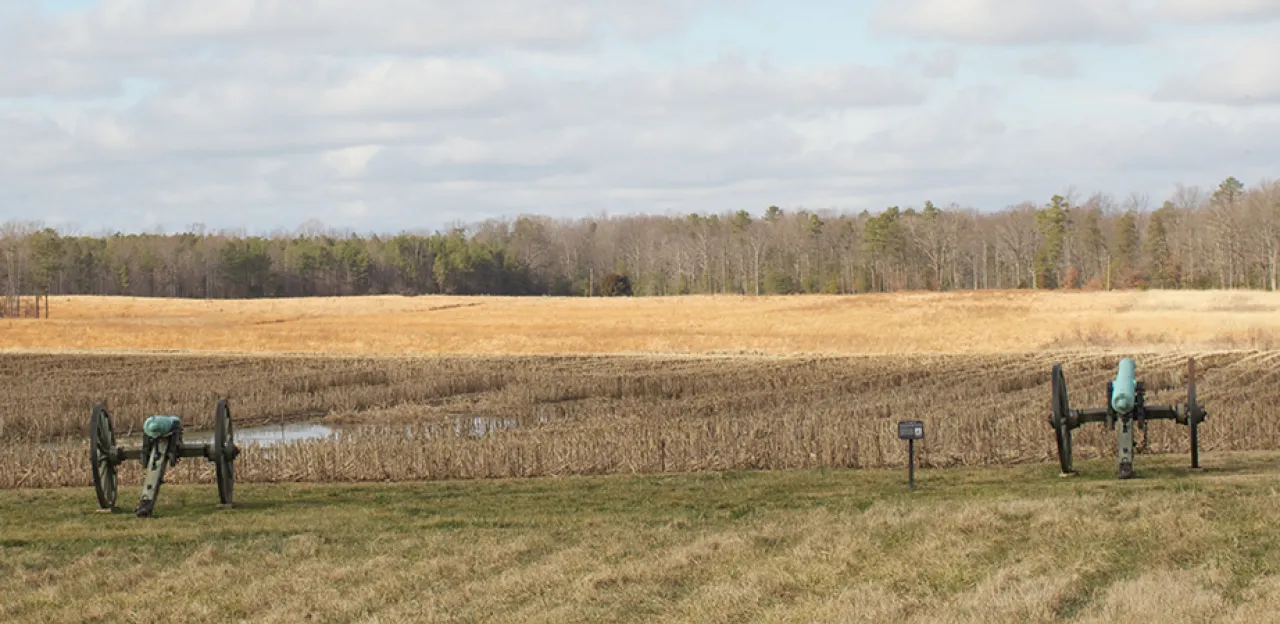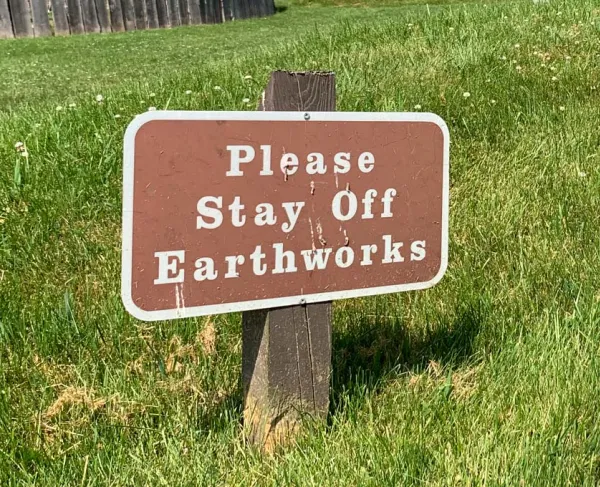10 Facts: Richmond, Virginia

Settled by Native Americans, burned by the British, defended by Patriots, targeted by Civil War armies, and scene of struggles for African-American freedom, Richmond’s rich history dates backs several hundred years and is relevant to the lives of all Americans today.
Fact #1: Armed forces came to Richmond long before the Civil War
Founded in 1737 at the falls of the James River, Richmond became Virginia’s center of government during the American Revolution when the capital was moved from Williamsburg. Beginning in the fall of 1780, General Sir Henry Clinton dispatched expeditions to Virginia in support of Lord Charles Cornwallis’s campaign in the Carolinas. On January 5, 1781, a British force led by Benedict Arnold entered Richmond. Arnold destroyed a large amount of munitions, including cannons and gunpowder, along with private property before he withdrew the following day.
Fact #2: Richmond was not the first capital of the Confederacy
In February 1861, delegates from the seceded states chose Montgomery, Alabama, as the capital of the Confederate States of America. When Virginia left the Union following the bombardment of Fort Sumter, Confederate leadership began to consider it as an alternative. Virginia was the largest state in the south. Ideologically, the Confederacy believed it was fighting a second war of independence and Virginia had a strong connection to the American Revolution. Additionally, Virginia possessed a major manufacturing center, Richmond. The transfer was approved by the Confederate Congress on May 21, 1861, and Confederate President Jefferson Davis arrived in Richmond eight days later.
Fact #3: Richmond’s logistical capabilities helped support the Confederate war effort
Richmond was a heavily industrialized city at the beginning of the Civil War. Five railroads which supplied Confederate armies emanated from Richmond. The city had large warehouses for tobacco and cotton which were used to trade for arms and munitions with foreign nations. Woolen mills produced uniforms. Richmond’s Tredegar Iron Works, among the largest in the in the country, opened in 1837. Throughout the Civil War, more than 800 whites, slaves and free African-Americans worked at Tredegar producing firearms, artillery and plating for warships including the CSS Virginia. The Confederate States Laboratory, a powder factory, was located on Brown’s Island in the James River. Workers there produced 1,200 cartridges a day.
Fact #4: Richmond was a primary Union objective in the early stages of the war
Located just 100 miles from the U.S. capital at Washington, D.C., the capture of Richmond quickly became a priority for the Abraham Lincoln administration and the Federals launched “On to Richmond” campaigns. The first offensive occurred in the summer of 1861 when General Irwin McDowell advanced from Washington. McDowell was routed by a Confederate army on July 21, 1861 at the Battle of First Manassas. The following spring, General George B. McClellan led the Army of the Potomac up the Yorktown Peninsula. McClellan was eventually driven back in the Seven Days’ battles by Robert E. Lee and the Army of Northern Virginia. In August 1862, Lee stopped a Union army advancing from northern Virginia under General John Pope. General Ambrose Burnside attempted to capture the city late in 1862 but was defeated by Lee at the Battle of Fredericksburg.
Fact #5: The war turned Richmond into a city of hospitals
Ongoing operations quickly turned Richmond into a hospital center. more than 30 hospitals operated within the city limits. One of the largest facilities was Chimbarazo Hospital. Opened in October 1861, 75,000 soldiers were treated there. Ten percent of those who entered the hospital died. Chimbarazo had 120 buildings, including an ice house and a bakery. Another, Winder Hospital, rivaled Chimbarazo in size. It consisted of 98 buildings, among them a library, and a farm for producing its own supplies. Other Confederate states also established hospitals to treat soldiers as well.
Fact #6: Numerous prisons were established in Richmond
Richmond had some two dozen prisons in operation during the war. The facilities were used to incarcerate Union sympathizers, soldiers, suspected spies, criminals and even disorderly Confederates. The most infamous facility, Libby Prison, was a three-story tobacco warehouse that housed Federal officers. More than 50,000 men passed through Libby Prison during the war. In February 1864, 109 soldiers managed to tunnel out of the building and more than half successfully returned to Union lines. Enlisted men were held at Belle Isle, an island in the James River near the western end of the city. Two years into the war, some 10,000 soldiers had been confined at Belle Isle.
Fact #7: Richmond was the target of one of the most controversial Civil War episodes
In February 1864, Union cavalry under General Judson Kilpatrick and Colonel Ulric Dahlgren left the Army of the Potomac’s winter encampment in Culpeper County and marched toward the Confederate capital. Kilpatrick hoped to enter Richmond and free Union prisoners held at Belle Isle and Libby Prison. Slowed by bad weather, the Federals met with stiff resistance. The raid ultimately ended in failure along with the death of Dahlgren. Papers found on Dahlgren’s body indicated one of the expedition’s goals was to assassinate Jefferson Davis and his cabinet as well as burn Richmond. This clandestine affair sparked outrage across the South and condemnation from the Confederate government.
Fact #8: Richmond’s importance to Union strategy evolved as the war progressed
As Federal war aims began to shift so too did the focus on Richmond. Following the failure at Fredericksburg, Union leadership began to emphasize the destruction of Lee’s Army of Northern Virginia, the force protecting Richmond, rather than the physical capture of the city. General Joseph Hooker engaged Lee in May 1863 but was trounced at the Battle of Chancellorsville. Hooker’s replacement, General George G. Meade, defeated Lee at Gettysburg but was unable to inflict a decisive blow that fall. General-in-Chief Ulysses S. Grant had measured success, fighting and maneuvering Lee through eastern Virginia during the Overland Campaign in the spring of 1864. Grant then laid siege to Petersburg, a critical rail hub south of the capital, and to Richmond itself. Richmond finally fell to Union forces on April 3, 1865.
Fact #9: Abraham Lincoln Visited Richmond in April 1865
Two days after its capture, President Abraham Lincoln toured Richmond. Accompanied by his son, Tad, and Admiral David. D. Porter, Lincoln made his way through the city streets and was thronged by citizens and just-liberated slaves. Among the places he visited were the Confederate White House, Virginia Capitol and Libby Prison. Tragically, Lincoln was assassinated ten days after his visit.
Fact #10: Preservation Efforts Continue around Richmond
Although modern encroachments have impacted Richmond-area battlefields and some have been lost to development, much of this hallowed ground can still be visited today. The Richmond National Battlefield Park, along with county and private entities have preserved sites and buildings related to the city’s Civil War past. The American Battlefield Trust has saved 3,100 acres around Richmond.
More Facts
-
Richmond’s Population ballooned during the Civil War
With a population of 38,000 in 1860, the influx of soldiers, politicians and office seekers during the war pushed Richmond to a city of 100,000 by the end of the conflict.
-
Final Resting Place of Generals and Presidents
Several notable Confederate generals are buried in Richmond, including A.P. Hill, Fitzhugh Lee, J.E.B. Stuart and George Pickett. Presidents James Monroe, John Tyler and Confederate President Jefferson Davis are also buried there. Most of these men repose at Hollywood Cemetery.
After 25 years, the American Battlefield Trust is in the final stretch of one of the most ambitious preservation campaigns in its history. Every gift...
Related Battles
12,737
4,595
4,150
1,750
6,800
8,700
2,100
5,600
3,797
3,673


